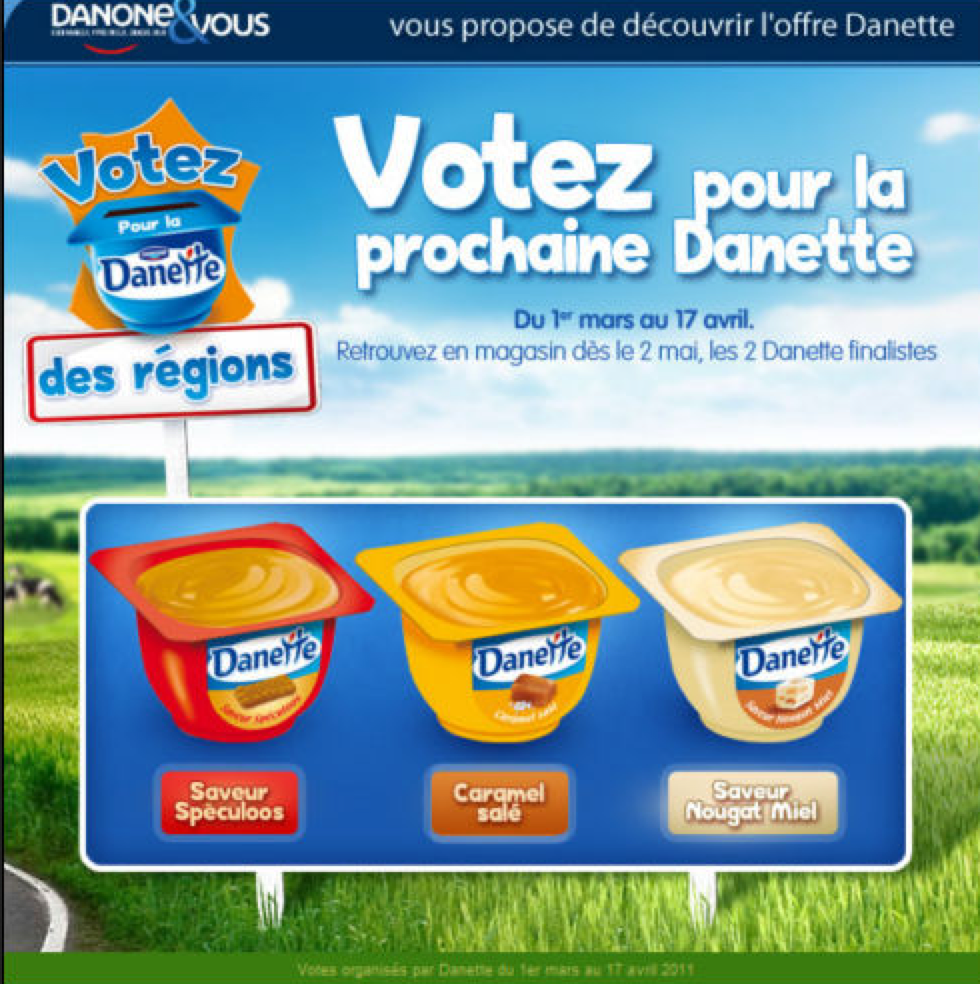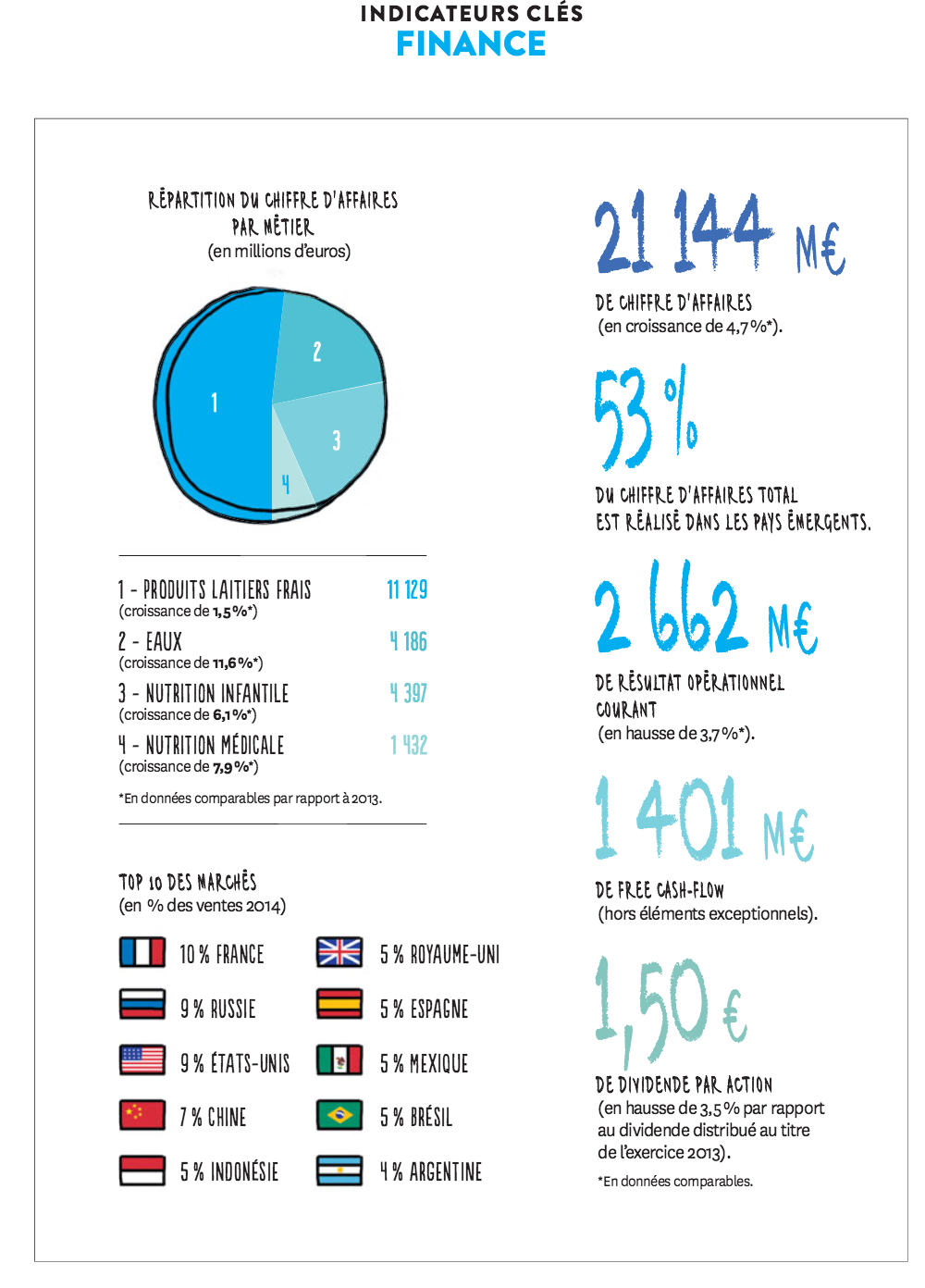KEY FINANCIAL INDICATORS
Division of business by category (in millions of euros)
1 Fresh dairy products 11,129 (growth of 1.5%*)
2 Waters 4,186 (growth of 11.6%*)
3 Infant Nutrition 4,397 (growth of 6.1%*)
4 Medical Nutrition 1,432 (growth of 7.9%*)
* Compared with 2013
Top 10 markets (by % of 2014 sales)
10% France
9% Russia
9% United States
7% China
5% Indonesia
5% United Kingdom
5% Spain
5% Mexico
5% Brazil
4% Argentina
21,144, million euros turnover (growth of 4.7%*)
53% of business done in emerging economies
2,662 million euros in current operating income (increase of 3.7%*)
1,401 million euros in free cash flow (excluding exceptional elements)
1.5 euros dividend per share (an increase of 3.5% over the dividend distributed in 2013
* Compared with 2013
A banking document
One of the recent developments in banking, both in Canada and elsewhere, is the growth of online banks. Unlike regular banks, which have large physical infrastructures, online banks require customers to perform almost all their banking by phone or over the internet. In return, they charge generally lower rates.
The following passage describes the use of one of these banks (Tangerine. Imagine that you work for a competing bank and that you have been tasked with reading the document and determining what services are provided. You will find below a set of questions that form a sort of checklist for this. Try to determine how many of the features on the checklist are provided by Tangerine. A translation is provided after the comprehension questions.

Checklist
- Can bills be paid online?
- Can cheques be deposited online?
Answer
Yes: Déposer un chèque avec Photochèque.
- Are email money transfers supported?
Answer
Yes: Envoyer de l'argent par courriel.
- Can the password be changed online?
Answer
Yes: Réinitialiser votre NIP. (NIP = Numéro d'identification personnel).
- Can a new account be opened online?
Answer
Yes: Ouvrir de nouveaux Comptes.
- Can a mortgage be obtained online?
Answer
Unclear: the site does say Accéder à nos outils hypothécaires, but it doesn't say if the whole process can be done online.
Translation
Mobile banking
Now you can Save Anywhere™ with your smartphone at tangerine.ca or through our mobile banking app. You can check your Account balances, review transactions, transfer funds, locate ABMs, pay bills, buy and sell Tangerine Investment Funds and get info on our Tangerine Cafés. You can even deposit a cheque with Cheque-In™.
Features
Devices
Manage your Accounts
Check Account balances
Pay bills
Review transactions
Transfer funds
Email money
Deposit a cheque with Cheque-InTM
Reset your PIN
Access our Refer a Friend program
Save with Small Sacrifices
Sign up for new Accounts
Buy \& sell Tangerine Investment Funds
Check our rates
Access our mortgage tools
Find an ABM
Get directions and hours for Tangerine Cafés
Receive Orange Alerts and view your Orange Snapshot
Follow us on Twitter®: @TangerineBank, @PeterAceto
An advertising text
Earlier in the course, we saw that advertising seeks to influence behaviour by affecting people's ideas or their emotions and leading them to act. The ultimate goal is to build customer allegiance. The following ad shows one way of attempting this.
Spend some time looking at the ad. (Source: the Définitions Marketing site, an illustrated marketing encyclopedia.) Try to understand which elements are designed to get people involved and acting, then answer the comprehension questions below. (A translation is provided below as well in case it's needed.)

Comprehension questions
- Does the contest have a timeline?
Answer
Yes, voting must happen between March 1st and April 17th.
- What is the prize?
Answer
The chosen project will appear in stores by May 1st.
- Is there a competitive element involved?
Answer
There is a regional element: speculoos is associated with Belgium, buttered caramel with la Bretagne, and nougat with the south of France, so people might support their region.
- How might this ad affect attitudes?
Answer
People feel they have a voice in how the product is developed.
Translation
Danone and you
Danone lets you discover the Danette offer
Vote for the regional Danette
Vote for the next Danette
From March 1st to April 17th
Find the two Danette finalists in stores on May 2
Danette speculoos flavour
Danette salted caramel
Danette nougat and honey flavour
Summing up
You should now feel more comfortable with the language of business in French. In particular, you should feel capable of picking up a business text and using the techniques we have learned to determine its basic structure and its gist.
That being said, remember that the materials we have just covered are just the beginning, for two reasons. First, it took you many years to master your first language. These twelve modules are only the beginning of exploring business language in French. Second, the study of business concepts and terminology is a science in itself. If you are lucky, you will already have a background in this area, and your work will consist mostly in understanding the particularities of how business is done in French. Otherwise, you will have to spend time learning more advanced business concepts in order to deal comfortably with more complex texts in business French. In both cases, though, the modules we have covered should give you a firm footing for further explorations. Apply these by going out and exploring written and oral texts in French. And have fun!



